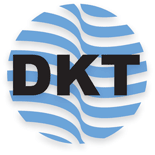Intraannual fog variability and its relationship with spatio-temporal gradients in northern Chilean Atacama Desert
- 1Department of Geography – Research Group for Earth Observation (rgeo), UNESCO Chair on World Heritage and Biosphere Reserve Observation and Education, Heidelberg University of Education, Heidelberg, Germany (juan.pastene@uni-heidelberg.de)
- 2Heidelberg Center for Environment (HCE) & Institute of Geography, Heidelberg University, Heidelberg, Germany
- 3Instituto de Geografía & Centro UC Desierto de Atacama, Pontificia Universidad Católica de Chile
The coastal regions of the Atacama Desert comprise some of the driest areas of the world, with average annual precipitation mostly less than 1 mm per year. It is in these environments where the ocean-atmosphere interconnected system determines the spatio-temporal dynamic of an advective coastal fog, providing moisture out stratocumulus clouds from the Pacific Ocean to an hyper-arid environment and allowing the development of fog ecosystems and high biodiversity along the Atacama coast.
Studies about fog has been done in this region since the middle of the 20th century. However, there is a high quality knowledge gap about spatio-temporal fog dynamics on a local scale and its interaction of climate variables with topography. The study on fog climatology and its variability will be the basis for the analysis of complex biosphere-atmosphere interactions, in which the local ecosystems can act as bio-indicators for fog water availability and climate change.
The study area is situated in the Chilean coastal desert of Atacama in the Tarapacá region (20° S), where a transect of seven climatological stations located between 518 m and 1,354 m altitude, from the coast to 10.7 km inland, records a high temporal (hourly/10-minutes) atmospheric data. The climate stations measurement it is based on Standard Fog Collectors (SFC) and a broad set of atmospherical variables that allows determine the relationship between the spatio-temporal variability of the fog and its driving parameters.
First results show a significant local intraannual fog variability with marked spatial differences in fog water collected and its atmospherical parameters along longitudinal and altitudinal gradient. The fog dynamic could provide a test bed for analyzing, assess and modeling biosphere-atmospheric interactions and relating them to meso-climate regimes.
How to cite: Pastene, J. C., Siegmund, A., del Río, C., and Osses, P.: Intraannual fog variability and its relationship with spatio-temporal gradients in northern Chilean Atacama Desert, 12. Deutsche Klimatagung, online, 15–18 Mar 2021, DKT-12-2, https://doi.org/10.5194/dkt-12-2, 2021.

